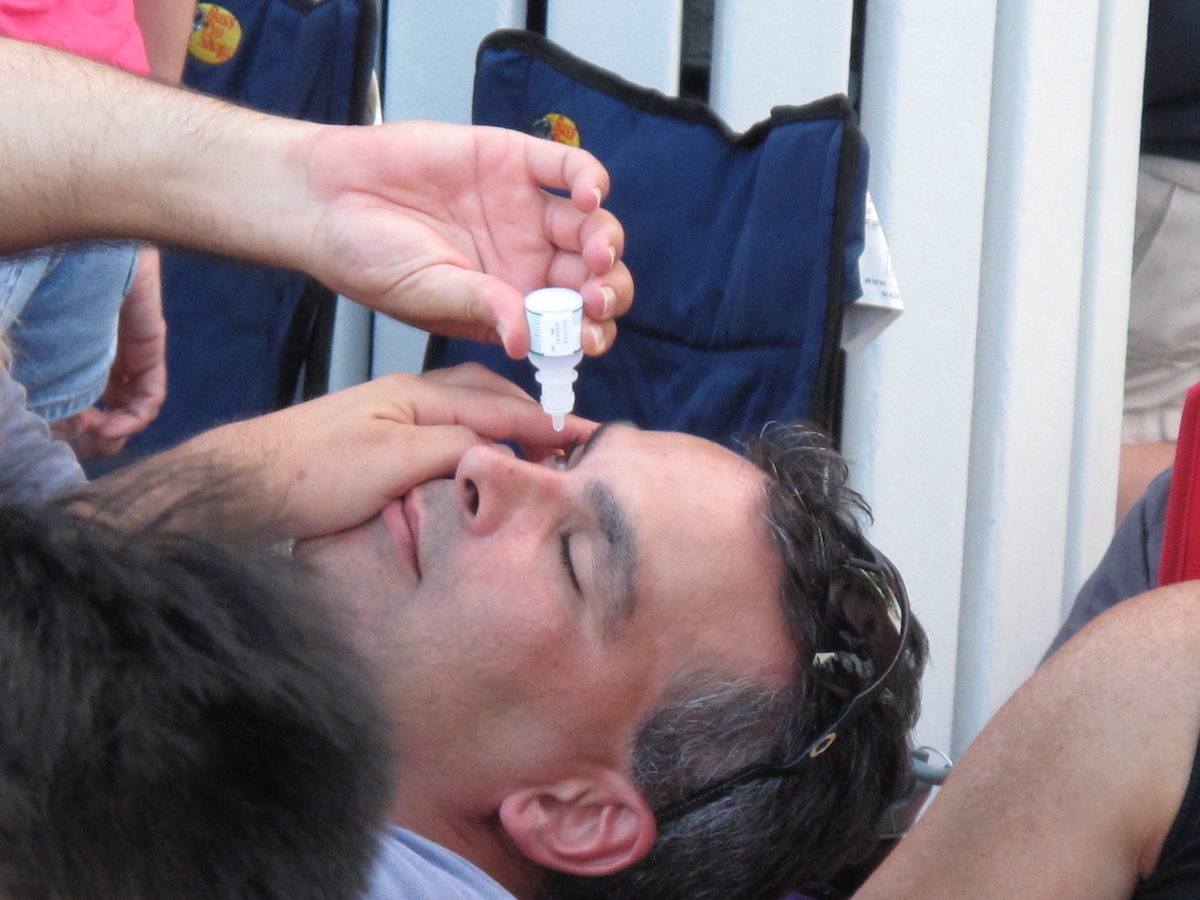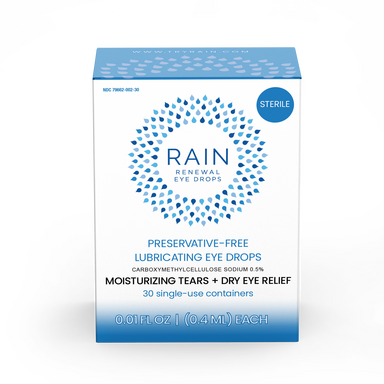Whether you’ve been thrust into the dry eye community by a sudden migration to computer work or if you’re a seasoned veteran, nobody is immune to the pitfalls of a poorly implemented eye care routine.
If you’re looking for ways to combat dry eyes more effectively, learning how to apply eye drops correctly is an excellent place to start.
The best way to view your eye drop routine is to imagine you’re in a clinical setting (fun, we know).
We say this because when you’re in the comfort of your own home, it’s all too easy to skip important steps that ensure proper sterilization points, as well as the application of eye drops itself.
Now that you’re in the ideal frame of mind, let’s take a comprehensive look at the steps involved in proper eye drop use.
1. Don’t Settle for Inferior Drops
First and foremost, if you’re not being prescribed medicated eye drops from your doctor, it’s crucial that you choose a product without harsh preservatives and/or other additives, as these can exacerbate dryness and irritation.
This is why Rain Eye Drops – which outperform hyaluronate according to this systematic review from Seoul National University Hospital (referencing Rain’s active ingredient, carboxymethylcellulose) – are completely free of these preservatives.
2. Prepare All of Your Supplies
Here is everything you will need (at a minimum) to successfully apply eye drops while minimizing the chance of contamination:
- Drops
- Soap or hand sanitizer
- Tissues
- A nearby mirror
- Preferably, a nearby sink
It’s important not to rush into your eye care routine without these items, as doing so could be unsafe.
3. Sanitize and Prepare Yourself
This step is absolutely crucial: wash your hands! And not like you did when you were a kid appeasing mom’s request; go all the way through the alphabet and get in all the crevices.
Next, shake the drops thoroughly.
Tissues and mirror handy, hands washed, and the tube is shaken, you’re now ready to apply the drops.
4. Apply the Drops
First, tilt your head back and focus on a spot on the ceiling.
Next, raise the eye drop tube to align it over the target eye.
If you have trouble maintaining your hand in this position due to weakness and/or tremors, you can stabilize part of your hand against your forehead – so long as it doesn’t impair your ability to line the tube up accurately.
Using the pointer finger of your free hand, gently pull your lower eyelid down to create a small gap underneath the eyeball.
Still looking up, slowly squeeze the dropper until a drop falls into the gap.
5. Do This Immediately After Dropping
It may be tempting to blink, but resist the urge, keep your eyes closed, and tilt your head down. Maintain this position for 2-3 minutes without opening your eyes.
You can apply light pressure to the gap between your eye and the bridge of your nose to prevent the drops from entering your nasal passages.
Once the appropriate amount of time has passed, you can open your eyes and use tissues to gently wipe away any excess fluid.
Finally, carefully replace the cap on the dropper and wash your hands thoroughly again.
Avoid These Common Mistakes
Keeping in our clinical mindset, your chief concern should be minimizing the risk of infection, which is why it’s imperative not to touch the tip of the dropper. If you have long eyelashes, make sure to account for this when holding the tube, and don’t touch the tip with your hand or anything else.
Another issue many people have is not allowing enough time for the drops to do their thing. If you don’t wait at least two (preferably three) minutes, you may squander the ability of the drops to lubricate the surface of the eye and soothe any irritation and/or inflammation you may be experiencing.
With the exception of rewetting drops specifically intended to be used while wearing contacts, it’s not a good idea to apply drops with your contact lenses. Most over-the-counter and medicated drops are not intended for this use, and when they are, should be clearly labeled as such. If you still can’t tell, consulting your eye doctor is always a smart route.
Another common practice to avoid is applying oil ointment and eye drops together. If both have been prescribed by your doctor to be taken in a certain order, then that’s a different story, but applying both over-the-counter products on your own may cause unwanted interactions between the products and/or worsen symptoms.
If you don’t have tissues nearby, you may be forced to scrub your eyes with your hands immediately after dropping, which is definitely not optimal for several reasons.
Last but not least, it’s important never to share your eye drops with someone else, even if the drops aren’t medicated. This creates yet another opportunity for infection.
When should I apply eye drops?
If you have an acute case of irritation and/or severe dryness earlier in the day, there’s no harm in applying eye drops to get some relief (though, keep in mind you may be blurry for a little while). However, if you’re more of a chronic and/or consistent case of ongoing dryness, it’s best to apply before bed. This will help prevent that morning dryness and/or blurriness.
What happens if you put too many eye drops in?
In the case of gentle, preservative-free formulations like Rain, the worst you’re likely to experience is a bit of extra blinking and some of the product running down your face.
If you’re using medicated eye drops that contain corticosteroids or other drugs, however, you could experience a range of symptoms. These vary widely but can include worsening irritation and dryness.
Can you take a shower or wash your face after applying eye drops?
If you are using artificial tears, it is typically not necessary to wait for any period of time before showering or washing your face. If you are using medicated eye drops, the answer varies and is best left to the prescribing physician.
How long should you wait before you put your contacts back?
Most eye drops require at least ten minutes to impart their effects on the ocular surface and any other intended targets.
In some cases, the product needs time to meltdown into smaller globules with the help of your body heat. To give these processes enough time, allowing a minimum of fifteen minutes before putting in contacts is a wise practice.

